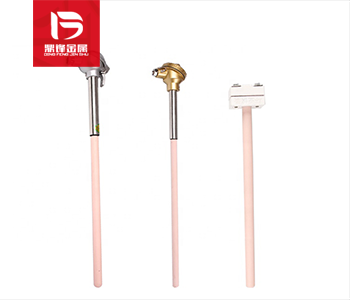
Platinum-Rhodium Thermocouple Wire Recycling
Platinum-Rhodium Thermocouple Wire is mainly composed of two platinum-rhodium alloys. Common models are:
S type (Pt-Rh10/Pt): 10% rhodium content (Pt-10Rh), the other pole is pure platinum (Pt).
R type (Pt-Rh13/Pt): 13% rhodium content (Pt-13Rh), the other pole is pure platinum (Pt).
B type (Pt-Rh30/Pt-Rh6): the positive pole is 30% rhodium platinum alloy (Pt-30Rh), the negative pole is 6% rhodium platinum alloy (Pt-6Rh).
- Parameter
- Related Questions and Answers
-
Name : Platinum-Rhodium Thermocouple Wire
-
Use : Glass industry,Metallurgical industry,Aerospace,Scientific research and laboratory
-
Application Areas : Metallurgical industry,Aerospace,Scientific research and laboratory
-
Appearance and properties : Silver Wire
-
Settlement Method : On-site payment
-
Recycling Type : Rhodium recycling
-
Door-to-door recycling:worldwide
-
Customer service: Free content testing and door-to-door recycling
Rhodium Iodide Recycling
Rhodium iodide is an inorganic compound composed of rhodium and iodine, and is a type of transition metal halide. It usually appears as a dark brown or black crystalline solid, is hygroscopic, and easily deliquesces in air. Waste rhodium iodide is a recyclable rhodium-containing precious metal catalyst waste. Recycling of rhodium-containing precious metal catalyst waste also includes rhodium chloride recycling, rhodium salt recycling, rhodium acetate recycling, rhodium hydride recycling, rhodium oxide recycling, rhodium carbon recycling, etc.
Search : Rhodium Iodide RecyclingRhodium Slurry Recycling
Rhodium slurry is a suspension containing rhodium particles or rhodium catalyst, usually consisting of rhodium metal or a rhodium compound (e.g. rhodium chloride or rhodium oxide) mixed with a suitable solvent or carrier (e.g. water or organic solvent). Waste rhodium slurry is one method of recycling rhodium-containing waste. Recycling of rhodium-containing waste also includes recovery of rhodium water, recovery of rhodium slag, recovery of rhodium carbon, recovery of rhodium powder, recovery of rhodium film and recovery of rhodium gold.
Search : Rhodium Slurry RecyclingRhodium Nitrate Recycling
Rhodium nitrate (Rh(NO₃)₃) is an inorganic compound of rhodium, usually existing in the form of red or purple crystals. It is the nitrate salt of rhodium and is often used in the manufacture of catalysts. Waste rhodium nitrate is a recyclable rhodium-containing precious metal catalyst waste. Recycling of rhodium-containing precious metal catalyst waste also includes rhodium chloride recycling, rhodium oxide recycling, rhodium acetate recycling, rhodium resin recycling, rhodium iodide recycling, and rhodium carbon catalyst recycling.
Search : Rhodium Nitrate RecyclingRhodium Powder Recycling
Rhodium powder is a type of powdered rhodium metal, usually with a silver or off-white appearance. It is made by high-temperature refining, chemical reduction, or mechanical processing of rhodium metal. Scrap rhodium powder is a type of precious metal powder recycling. Other types of precious metal powder recycling include silver powder recycling, gold powder recycling, ruthenium powder recycling, platinum powder recycling, palladium powder recycling, silver powder recycling, etc.
Search : Rhodium Powder RecyclingProduct Details
Platinum-Rhodium Thermocouple Wire is mainly composed of two platinum-rhodium alloys. Common models are:
S type (Pt-Rh10/Pt): 10% rhodium content (Pt-10Rh), the other pole is pure platinum (Pt).
R type (Pt-Rh13/Pt): 13% rhodium content (Pt-13Rh), the other pole is pure platinum (Pt).
B type (Pt-Rh30/Pt-Rh6): the positive pole is 30% rhodium platinum alloy (Pt-30Rh), the negative pole is 6% rhodium platinum alloy (Pt-6Rh).
2. Application field
Platinum-Rhodium thermocouple wire is widely used for temperature measurement in high temperature environment due to its high temperature stability and oxidation resistance. The main applications include:
Glass industry: furnace temperature monitoring.
Metallurgical industry: melting temperature detection of steel and high temperature alloys.
Aerospace: engine and high temperature material testing.
Chemical industry: high temperature reactor, cracking furnace monitoring.
Scientific research and laboratory: high precision temperature measurement equipment.
3. Recycling
Due to the high value of precious metals of platinum and rhodium, waste platinum-rhodium thermocouple wire has a high recycling value. The recycling process includes:
Recycling classification: sorting by model (S, R, B type).
Detection and analysis: Determine the platinum-rhodium content by XRF (X-ray fluorescence spectroscopy) or ICP (inductively coupled plasma spectroscopy).
Purification and smelting:
Physical cleaning: remove surface oxide layer or impurities.
Chemical dissolution: extract precious metals with aqua regia or other suitable solvents.
Electrolytic refining: further improve the purity of platinum and rhodium.
Reuse: purified platinum-rhodium can be used for new thermocouple manufacturing or other industrial purposes.
Platinum-rhodium thermocouple wire is one of the sources of platinum-containing waste recycling, including platinum-rhodium block recycling, electroplating rhodium recycling, platinum crucible recycling, rhodium catalyst, platinum-iridium alloy recycling, platinum wire recycling, etc. If you have any waste recycling needs, please call our 24-hour service hotline. Dingfeng Precious Metals Recycling and Refining Plant has an independent recycling and refining plant, no intermediary to make a profit, a professional technical team and customer service staff one-on-one service to ensure the privacy of customers during the recycling process.

